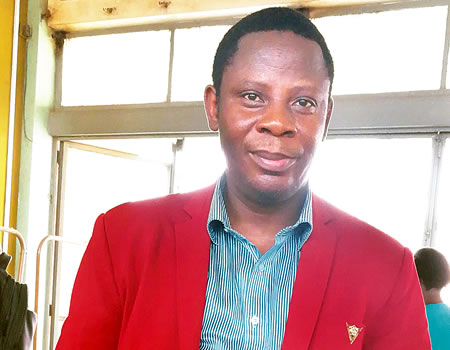What does cancer treatment involve?
Virtually every segment of the hospital is involved in the management of cancer. We can divide cancer treatment into two: local treatment and systemic treatment. The local treatment is limited to the area where the cancer is while systemic treatment will go round the entire body and is usually used when cancer has spread to different parts of the body which we call metastases.
Surgery and radiation are the two main local treatments while hormone therapy, chemotherapy, and targeted therapy are systemic forms of treatment. There are other treatment modalities like cryotherapy, hyperthermia and radio frequency ablation that also fall under local treatment.
Radiotherapy is an important treatment modality for cancer. It is estimated that half of all cancer patients will require radiotherapy at one point or the other in their treatment.
In our environment where most patients with cancer present at advanced stages of the disease, there will be many more cancer patients who will require radiotherapy as part of their treatment either for palliation, or treatment of their symptoms and so on.
No cancer care centre can claim that they offer comprehensive cancer treatment if they do not offer radiotherapy as part of their treatment. Most patients will not be able to complete their cancer care without radiotherapy.
How does radiotherapy contribute to the treatment of cancer patients?
Radiotherapy can be given as a single therapy modality for some cancers or as part of a regimen of treatment that could include surgery, chemotherapy, hormone therapy etc.
Radiotherapy can also help in symptoms control when cancer is advanced. A lot of patients with cervical cancer, for example, bleed. Radiotherapy is often required to stop the bleeding.
It also helps in improving the outcome of other cancer treatment modalities. For instance, after a cancer patient has been operated upon, the tumour bed may be treated with radiotherapy to improve the outcome of the treatment and reduce the chances of recurrence.
Radiotherapy may also be used to reduce the scale and possible cost of other treatment modalities. For example, radiotherapy may be used to reduce a big tumour to a smaller one. This will make the surgical operation to be easier and to reduce the chances of spreading the cancer cells to other areas of the body in the course of the operation.
What equipment do we use in radiotherapy?
Every radiotherapy centre should have equipment that includes megavoltage equipment with multiple energy, and can produce electron and photon; multi-channel High Dose Rate (HDR) Brachytherapy, CT simulator, Mould Room, Treatment Planning System, as well as medical Physics Unit for Dosimetry and radiation protection.
But every radiotherapy centre should have a minimum of two of these essential machines for cancer treatment. Such a backup is important because a break in the treatment of cancer patient when on radiotherapy complicates the treatment and reduces effectiveness. So we usually do not want a break once a patient commences radiotherapy. Two machines will help to reduce the chances of treatment breaks.
Also, there should be correspondent hospitals with radiotherapy services that patient can easily be moved to in order to avoid a break in their treatment such if the two machines develop faults at the same time.
Radiotherapy care in Nigeria, what is the situation?
Radiation treatment is in constant crises in Nigeria. Right now, Ibadan and Abuja centres are probably the only two centres that people can go to for radiotherapy services.
There are only eight hospitals with megavoltage external beam machines serving the population of 180 million people. With the recommendation of a treatment machine to 250,000 people, Nigeria requires about 500 of such machines to be able to provide adequate cancer treatment services to its teeming population.
There is only one centre with functioning brachytherapy equipment. So the many patients who need brachytherapy are offered external beam treatment only and then supplement with chemotherapy. This is not ideal.
Unfortunately, even the eight centres are bedevilled by constant downtimes due to equipment breakdown, the problem of spare parts, epileptic power supply and so on. Cancer treatment in Nigeria is in constant crisis.
For the entire world, North America has about 26 per cent of the entire world megavoltage external beam machines, Asia 27 per cent, Latin America and Caribbean 34 per cent; Europe 34 per cent and Africa has only two per cent of the megavoltage external beam machines in the world.
But it is even worse than that; 50 per cent of the megavoltage external beam machines in Africa are located in South Africa and Egypt. So the rest of Africa, including Nigeria, Africa’s most populous country has only one per cent. So you can see that it is a major problem.
So, what are the challenges caused by this?
We do not have enough equipment for cancer treatment. Then we have difficulties running the inadequate few that we have. It is either we have equipment maintenance problem or there are too many people queuing to use the few machines.
We have issues with sustaining them. When the radiation source expires, getting a replacement source is a serious challenge, both financially and logistically. The radiation source is supposed to spend about five years. After five years, its effectiveness reduces as well as the number of people it can treat. This is always a problem.
The cancer treatment centre in Gombe did not work for some years because they were not able to change its radiation source. Luckily, the problem was eventually resolved last year and the machine is currently functional. The machine in Lagos University Teaching Hospital (LUTH) is currently not functioning.
At the University College Hospital (UCH), the radiation source will also need to be changed soon as it is approaching its designated period for replacement. We are comforted to know that our CMD, Professor Temitope Alonge has shown tremendous interest in ensuring the continued functionality of our machines alongside Professor Adeniyi Adenipekun to ensure that this does not become a problem.
There is an urgent need for training for the engineers repairing these machines and they have limited access to spare parts for the repairs.
Nigeria does not have enough trained personnel; even the practising radiation oncologists’ need training on modern types of equipment for cancer treatment.
There is no centre in Nigeria, including the National Hospital Abuja that meets the minimum requirement to treat cancer patients appropriately and fully in this country. The National Hospital has some modern external beam treatment machine which was recently installed by the current administration but they need brachytherapy to complete the modernization.
What are the implications?
It means horrendously long waiting time for cancer patients to access treatment. In some centres in Nigeria, patients wait for as long as six months to one year to receive radiotherapy treatment.
Right now at the Radiotherapy Department of UCH, patients have been booked beyond May 2018 for radiotherapy. Unfortunately, every day you wait without treating cancer, it progresses. Of course, if patients are not getting treatment as they should, the outcome will be poor. Many people are dying because they cannot access treatment.
Since only two treatment machines are working in Abuja and Ibadan at the moment, patients have had to travel very long distances from their home to access these suboptimal treatments.
Patients are sometimes forced to receive alternative treatment from quacks, faith healers, and common who will give them something and collect a lot of money from them. All, these had led to high mortality and morbidity. It also made research and training of medical students and resident doctors suboptimal.
How to address the problem
Cancer remains a very traumatic diagnosis and its treatment is very expensive. The government should endeavour to alleviate the suffering of cancer patients by providing improved treatment opportunities at subsidised rates.
The government should provide dedicated funds for equipping selected hospitals in the country to provide comprehensive cancer treatment. They should use the instrumentality of NHIS to provide a subsidy for cancer care.
States and local government should also complement the efforts of the Federal Government by building modern cancer care centres. Philanthropic organisations and individuals should also help cancer care centres. Also, existing centres should be strengthened with modern treatment facilities.
Regulatory bodies including Customs, NAEC and NNRA should reduce regulatory fees and delays to encourage more investors. They must understand that some people’s lives depend on this equipment.
Power is central to the functionality of a cancer treatment centre, so there must be alternative power sources to reduce the cost of diesel and treatment. The country should limit the equipment types to major vendors who should be required to provide local support for the machines.
There is also the need to create and train a “flying squad” of biomedical engineers who can attend to equipment faults in any part of the country at short notices.
ALSO READ: Nigeria is safe for tourism —Lai Mohammed






